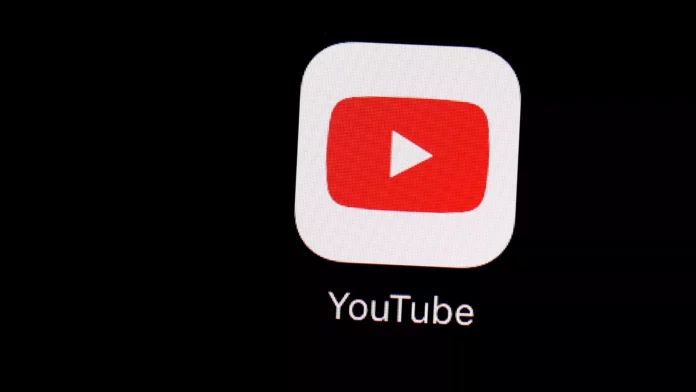YouTube’s labels that provide neutral information about conspiracy theories are being applied inconsistently across Europe, according to a new report. Two of Google’s main tools for combating disinformation on YouTube only work sometimes and only for certain European languages, a new study has found.
When users watch a YouTube video on a topic that is often the subject of misinformation, such as COVID-19 vaccines or climate change, a text box should appear that directs them to third-party sources with more information on the subject, such as Wikipedia.
The information bar should also appear in users’ search results in their native language.
However, AI Forensics, a European nonprofit that investigates the activities of major tech companies, has found that this is often not the case.
The researchers built a web crawler to test the panels and found that in 83 languages on the video platform, information panels were applied inconsistently to 12 topics from Wikipedia’s list of conspiracy theories, as well as to four types of publisher labels.
All panels are available in English. In German, videos on all but one topic, the Armenian genocide, have such labels. However, very few panels are available in Icelandic or Lithuanian.
AI Forensics said the tests show that YouTube pays “disproportionate attention to Western languages” and “neglects” regional languages such as Basque, Catalan and Galician.
YouTube’s content warnings go beyond topics prone to misinformation. They also include labels for news sources and fact-checkers that explain whether they are partly or fully funded by government sources, “to help you better understand the sources of news content,” the company says.
But, as the AI Forensics report found, government funding was flagged in some countries and not in others.
For example, Euronews receives some funding from the European Union. YouTube has flagged it in some countries, but not in Denmark, Greece, Norway, Iceland, Finland, and Portugal.
“We are concerned that some groups of people may have unequal access to security measures” aimed at combating misinformation on the platform, Salvatore Romano, head of research at AI Forensics, told Euronews Next.
“Instead of building trust in the platform, this is undermining it,” Romano added.
It’s unclear whether YouTube will address the issue
The YouTube website states that “dashboards may not be available in some countries/regions and languages,” and that the company is working to expand their reach.
The AI Forensics team said it met with YouTube representatives to present the findings of its research. During those meetings, YouTube allegedly stated that the language discrepancies were not intended to occur and that it had no way of systematically verifying how the panels were deployed across Europe.
AI Forensics said YouTube had agreed to resolve the discrepancies, but did not elaborate.
YouTube did not respond to Euronews Next’s request for clarification on the meetings that were allegedly held and what steps the company plans to take.
YouTube, which is part of parent company Google, is a signatory to the European Commission’s Code of Practice on Disinformation, a voluntary agreement that sets standards for technology companies to combat disinformation.
In March, YouTube said it would “assess and update disinformation-prone topics that receive additional context from dashboards” as part of its commitment.
But Romano believes that the haphazard content labeling may be even more widespread than the AI Forensics researchers found, as the report notes that it only reflects a “partial overview” based on a small sample of dashboards.
Commission may pressure YouTube over inconsistencies: AI Forensics
Romano said he hopes YouTube will fix the inconsistencies. If it doesn’t, he will ask the European Commission, the EU’s executive arm, to investigate a possible breach of the Digital Services Act (DSA).
The commission could, for example, ask YouTube for more information about how the company manages its dashboards, which is the first step in any DSA investigation, he said.
“The European Commission could put pressure on YouTube to show them that this inconsistency is unacceptable across all platforms and across all products,” he said, noting that it creates “second-tier markets” across Europe where standards designed to protect against disinformation are not being met.
Euronews Next asked the Commission to confirm whether it would request additional information from YouTube, but did not receive an immediate response.
At the very least, Romano will be keeping an eye on it. He said his team has created a tool to track how often YouTube’s information labels appear in different languages.
Using a publicly available tracker, people can see how and topics have content labels in their language. This will also allow researchers to detect any changes in dashboards, Romano noted.









